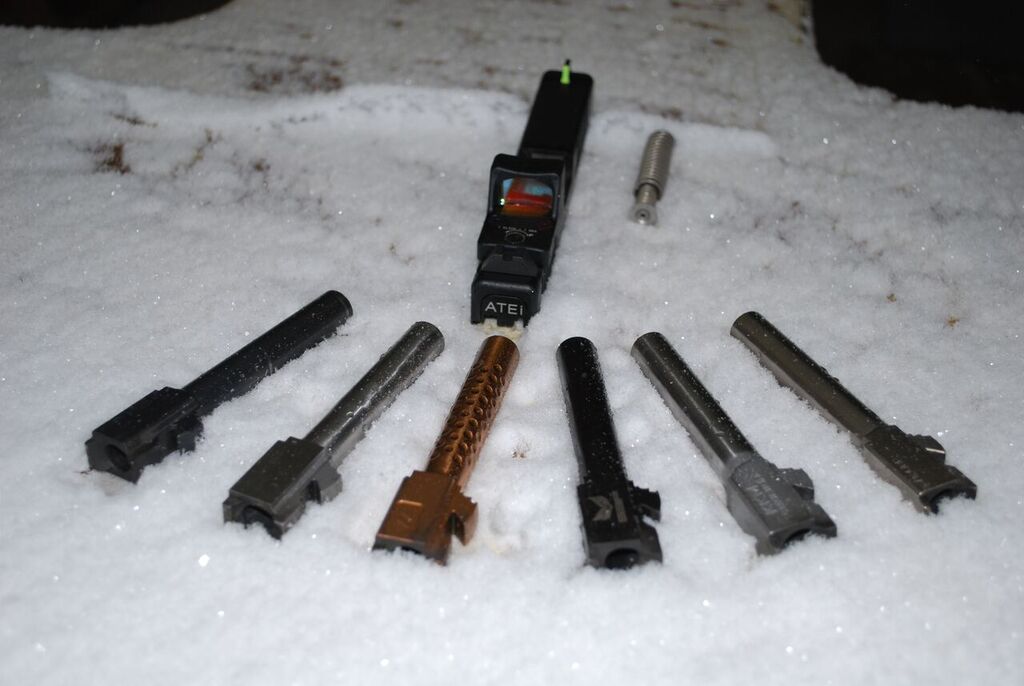
Due to concerns presented on the forum Primary and Secondary, there were more questions than answers about aftermarket Glock barrels. As we only had time and ammo to do 1 round of testing, we opted to do non-threaded G17 gen 4 barrels that were drop-in. We attempted to source barrels from the forum members but were unable to get the two most contested barrels, S3f and Zev. When contacted, both companies agreed to send us their barrels for ransom rest testing. So we tested Glock OEM, KKM, Wilson Combat, S3F and Zev.

Initial Impressions: This article is the initial impression. We couldn't care less how the barrels look -- the goal was to see what they do on paper. To answer one question up front, we had Doug Holloway of ATEi, a very experienced machinist, look at the barrels. Doug said, "It appears that all these barrels are made by different manufacturers and not just re-branded versions of each other, as all had different machining cuts and tool marks when closely inspected." We believe this should put that rumor to rest.
Here is a video of Craig Manning Running the Ransom Rest.
Set up: We ran each barrel using an RMR’ed gen 4 very low-round-count slide, the rmr09 gave us an observable fail-safe to indicate if anything went wrong with the ransom rest. (They were user errors, but we did catch 2 mistakes in the test thanks to the RMR and had to reshoot those targets.) Craig Manning, a bullseye shooter, checked every round before it was fired to make sure the rest was as consistent as possible. We used a gen 4 lower with 1 backstrap, while not what Ransom recommends, the results speak for themselves. The automated trigger-pull mechanism did not work, so while different people did the firing, the same person did each type of ammunition for all barrels (Manning did all but 2 of the tests, as we quickly realized he was much more efficient). We did this test as consistently as possible, not to say if you reproduced it that yours would be identical, but your % differences (what did better than what and by how much) should be consistent with ours. We did not take the gun out of the ransom rest, we simply took the slide off, and we applied CLP to all the barrels at 2 points. To load the ammunition, we inserted the magazine and used the slide stop each time to release to be as consistent with loading as we could. During set-up we discarded 2 OEM barrels as poor performers.
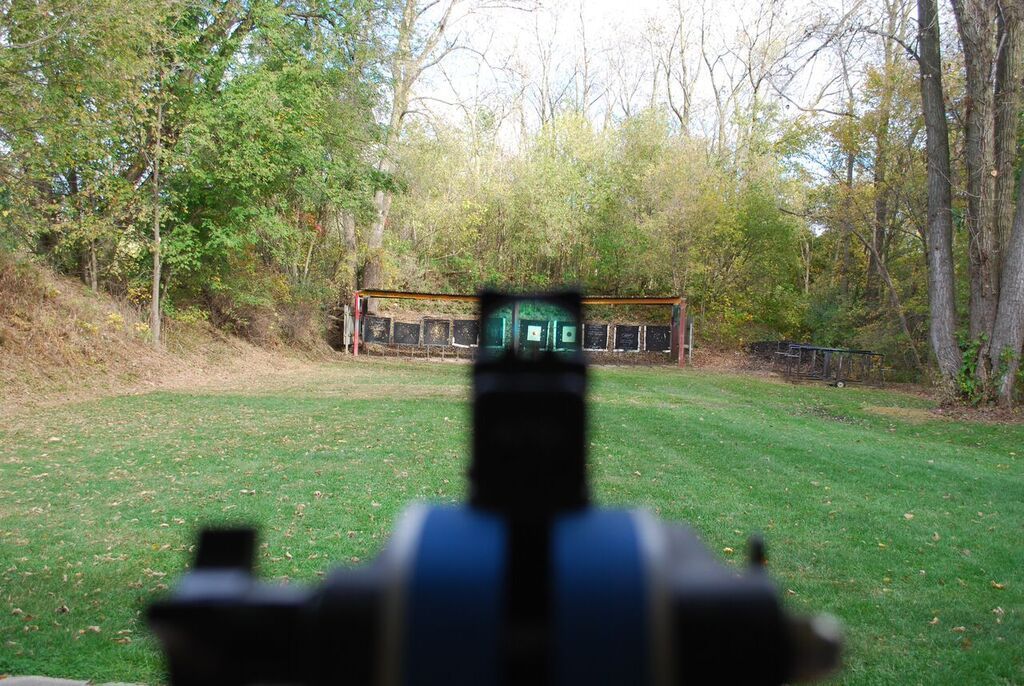
If you’re concerned as to how repeatable this is, please note that we tested the KKM a second time (so we could see how consistent we were day-to-day) with the GLA ammunition. The difference was under 4 hundredths of an inch.
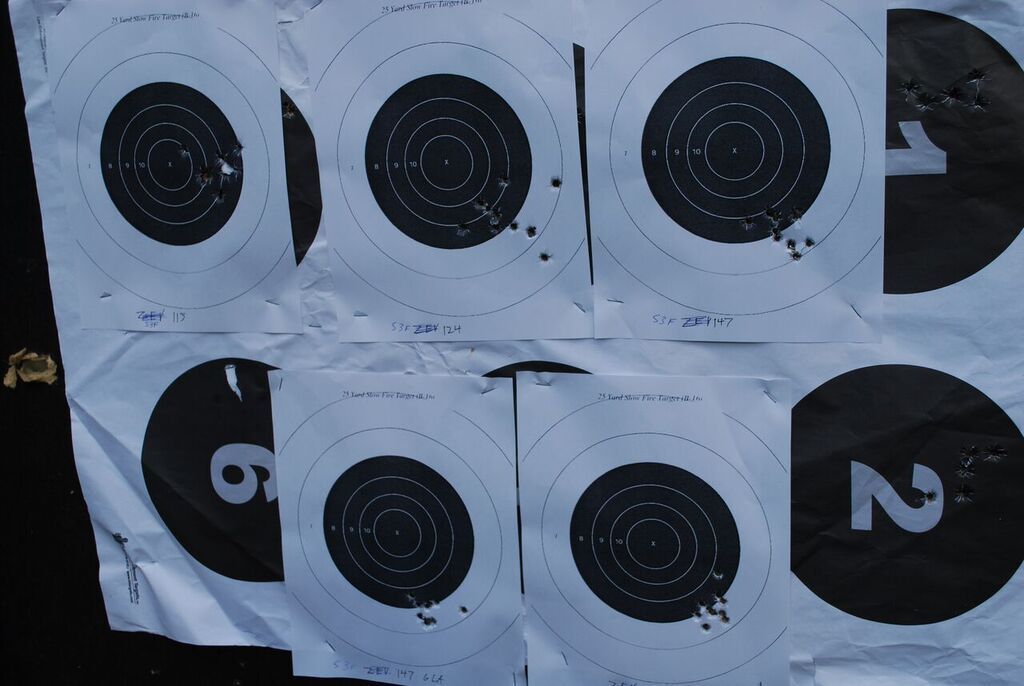
First test: After firing 80 rounds to prove the capability of the system (and using a different OEM barrel to do so as to not heat it up) we ran each barrel with 1 target stand, 5 targets and 5 magazines of 10 rounds each. We used 115 gr Winchester white box to start (the rest does better after the first 10 rounds as it settles in with the changes from swapping barrels, so we used white box in case it had to be discarded). After white box we used the following: 124 gr Freedom Munitions XTP new brass, 147 gr Speer Lawman FMJ, 147 gr XTP+P Great Lakes ammunition new brass, 147 gr Federal HST standard pressure. So, for each barrel, we started with a 5 type of ammunition test.
Then we ran tests with 6 barrels, 1 type of ammunition using OEM barrels as endcaps to see if the system was consistent. We did each subtest in a different order each time for the non-OEM barrels. These runs without the firing the 10 white box rounds first were not settled in, so we do not view them as accurate reflection of any of the barrels’ capabilities, however, the tests are consistent to themselves. We used 124 gr Speer Gold Dots and 115 gr Remington UMC for this portion of the test.
We’ll get into the results in a bit, but at this point we were focusing on 147 (as we didn’t have any decent 124 except enough Gold Dots for 1 test) and we were running out of HST. So we opted to run a 50-yard test and simply discarded the 2 barrels that were blatantly poor performers, so we opted to not include the Wilson combat and the KKM. This was done before the Gold Dot test. It would have been nice to have had enough ammo to include KKM at 50-yards. We were slated to, but due to having to reshoot some targets we did not have the ammo.
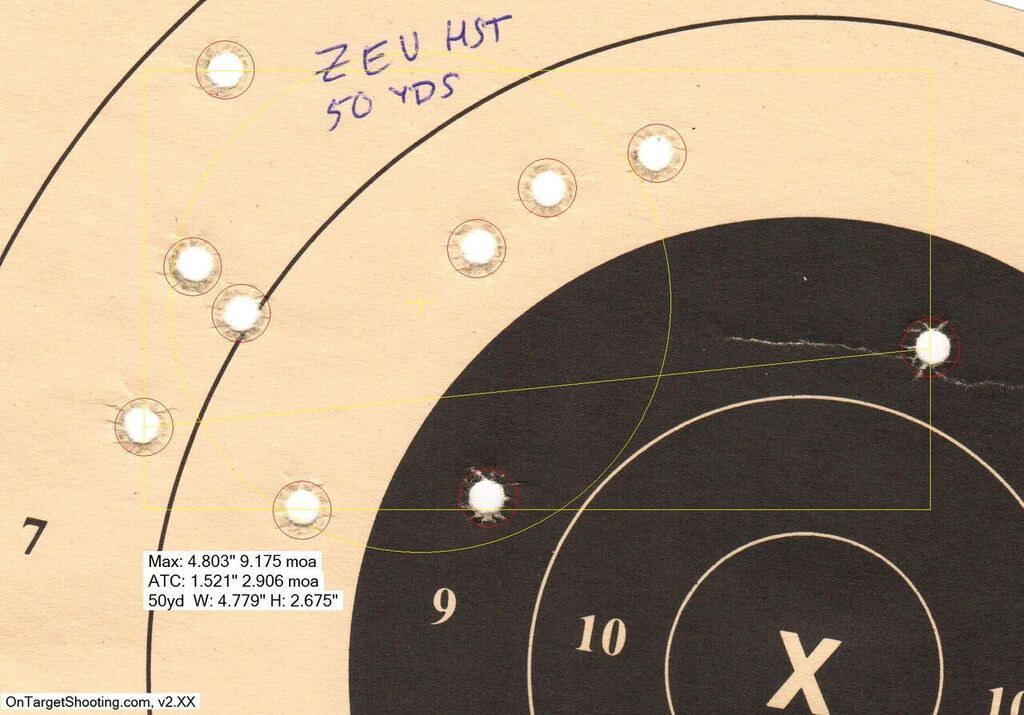
50-yards: We ran the best OEM barrel we had as a control. To make it as consistent as possible, we did 10 rounds of Federal Champion to settle in the gun, and to avoid any control issues, we changed the paper target every time so as not to manipulate any adjustments on the Ransom rest. So 10 Federal Champion, 10 GLA followed by 10 HST. We felt settling to be an advantage and as GLA XTP was outperforming HST we opted to put it second. Then we did identical tests all without moving a single adjustment on the rest with S3F and Zev barrels. (Note the numbers on the scans are for 25-yards, not 50-yards so the moa is doubled.) The Champion with the OEM had 3 rounds off the paper so the data was unusable. (It should be noted, that the OEM Champion group size that did make it on paper was the worst of the 3, as of which there was no benefit in doing it again)
The data: Note that a competition shooter may be more worried about distance from center averages and a defensive shooter is concerned by the worst round area. So this article is going to focus on the group size as it applies more directly to defensive shooting. All the data is provided so your more than welcome to use it to apply to your particular application.
Primary takeaways:
OEM: Some of the best and worst results we had were OEM barrels, consistency from barrel to barrel isn’t there. The need for an aftermarket barrel may be case-specific.
Wilson Combat: Seemed inconsistent, simply not better than OEM, got half way up the rankings once. The barrel did group respectably with HST and Gold Dots.
KKM: Flat-out destroyed all the other barrels with 147 gr XTP, and barely won out with the 124 Gold Dot. However, it performed average most of the time coming in 3rd. The gold dot superiority makes sense as it was designed for 124 gr for the military. So if you are planning on running 124s this is worth looking into. As 124 was not the focus of the test the data is limited. The * in the data is we shot HST through it twice, both times had 2 severe flyers, the better group is recorded in the summary, it’s still the worst HST group of all the barrels.
S3F: Was the clear winner at 25 yards with the cheaper ammunition and got second with 147 gr XTPs. At 50 it was not. An S3F barrel would be for you if you are more concerned about the accuracy for the cheaper ammo or not focusing on accuracy past 25 yards.
Zev: The most accurate barrel with the 147 Gr HST, at 25 it wasn’t a notable amount better but at 50 yards it was. While the second best performer at 25 yards it was clearly the best shooter at 50m with 147 gr ammunition. So if distance is your goal this barrel is by far superior. Zev seems to do better with average to center ranking than group size.
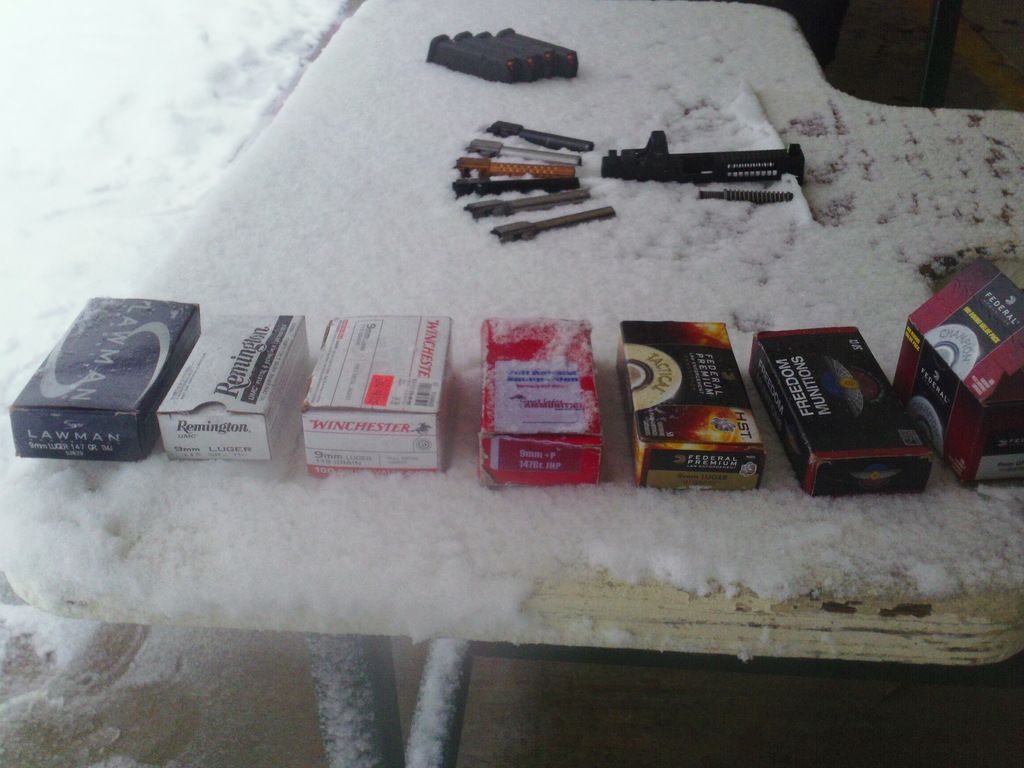
Ammunition seems to matter as much, if not more, than the barrel as does intended distance. If you decide it is worth it to buy an aftermarket barrel, get one that likes the ammo you intend to use. Hands-down the Great Lakes XTP 147 +P was the best performer we tested for accuracy. As many feel, HST 147 standard pressure is the ideal duty load everything, but the KKM outperformed the OEMs with this round by over three-fourths of an inch and that’s notable.
Biggest anomaly: Zev seemed to shoot better the further into the test it went. Its 50-yard group with 147 HST +P from Great Lakes was actually better than the 25-yard group. We have no idea why this happened, but we will admit that the testing system was the most consistent on the 50-yard test (nothing moved at all for anything inside any barrel’s individual test). This also leads credence to the bullseye approach found in the bigger data compilation of average to center. It would be ideal to do a similar test with all of these barrels at the 1,000 round mark to see how/if the results change.
Are they worth it? Hands down if you shoot sub 5,000 rounds due to budget limitations, the barrel is not worth upgrading. Beyond that? It is up for debate, the better feedback you get, the faster you learn, look at the numbers and decide for yourself.
All that said, unless you choose a terrible combination of barrel and ammunition, you will have a sub 2.5” Glock at 25 yards, which means, to quote Yeti, “You suck, it’s not the gun.”
Thanks to Craig Manning for doing more than half of the work, and Brian Phillips for coming out in a snowstorm to help us out.
Special thanks to the members of Primary and Secondary for helping me get all the equipment together to do this test.
Shout-out to http://zevtechnologies.com/ and http://s3fsolutions.com/ for being confident enough with their barrels to allow a test they had no control over.
Gratitude to http://ateiguns.com/ for providing a pristine RMR09 slide, magazines and helping to design the procedures to ensure validity.
Equipment from: http://ransomrest.com/ https://www.trijicon.com/
Mike Wagner from http://www.greatlakesammo.com/ donated the 147 XTP +P ammunition. It was extremely helpful to the test.









